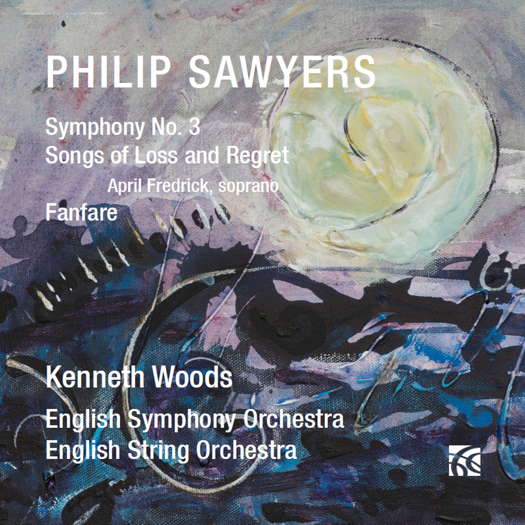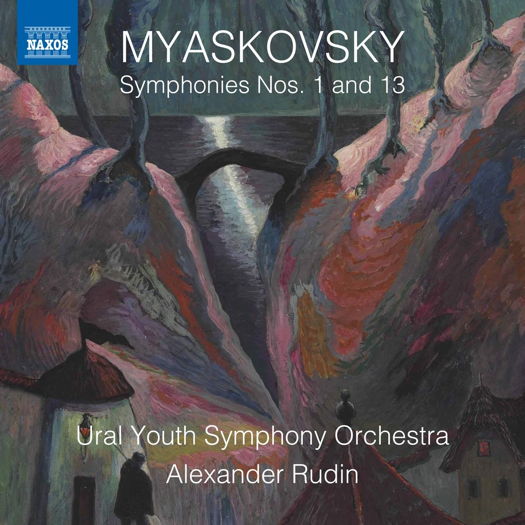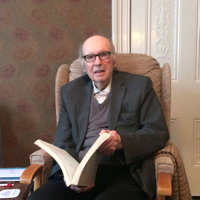 SPONSORED: CD Spotlight. View from the Celli - Philip Sawyers' Symphony No 3 impresses Alice McVeigh.
SPONSORED: CD Spotlight. View from the Celli - Philip Sawyers' Symphony No 3 impresses Alice McVeigh.
All sponsored features >>

Understated Sensuousness
Symphonies by Nikolay Myaskovsky,
intrigue GEOFF PEARCE
'... the Ural Youth Symphony Orchestra (conducted by Alexander Rudin) plays very well indeed, especially considering the age of the players. I am particularly impressed by the woodwind and brass, which never fail to impress.'
Nikolay Myaskovsky (1881-1950) is often called 'the father of Soviet symphonism', yet his music is somewhat neglected, at least outside Russia. He wrote twenty-seven symphonies over his lifetime, yet I have never heard any of them before, and have not been aware of any of them being programmed in New Zealand or Australia within my lifetime. I certainly welcome this new disc, with its fine performance and direction, as well as the short but comprehensive cover notes.
The first Symphony, composed in 1908, was written at a time the composer was still a student at the St Petersburg Conservatoire. It received its premiere in 1914, and was later revised in 1921. The first movement opens very quietly, slowly building in power. It starts slowly but gradually accelerates into a faster Allegro. The overall feel of the work is Romantic, with sweeping melodies, an overall warmth of sound, strong brass passages, and some beautiful writing for wind. One is reminded at times of Glazunov and also Scriabin - even Tchaikovsky at times. There is a pensiveness in this music, but at the same time a strength and resoluteness. The composer frequently uses rising sequences to create tension, much in the way that Tchaikovsky did.
Listen — Myaskovsky: Lento, ma non troppo - Allegro (Symphony No 1)
(track 1, 9:15-10:07) © 2019 Naxos Rights (Europe) Ltd :
The second movement, Larghetto, opens with a somewhat sad theme, yet at the same time, there is a serenity about it. Fine solos for woodwind and horn and a lovely carpet of strings and low woodwind and horns are a feature of this movement. It builds to a thoughtful climax before subsiding to a quiet conclusion. I feel an understated sensuousness here.
Listen — Myaskovsky: Larghetto (quasi andante) (Symphony No 1)
(track 2, 4:29-5:12) © 2019 Naxos Rights (Europe) Ltd :
The final movement starts in a brisk, resolute fashion, and reminds me of Tchaikovsky, and even a little of the Stravinsky Symphony in E Flat, written a couple of years earlier. This soon gives way to a more expansive section, which in turn leads to an often contrapuntal development section of the opening theme. This is a movement which changes quite quickly, requiring an orchestra that can respond quickly. The young people in this orchestra certainly can. There is a joy and enthusiasm as well as a sound understanding of this music, here, which makes it compelling listening.
Listen — Myaskovsky: Allegro assai e molto risoluto (Symphony No 1)
(track 3, 6:34-7:34) © 2019 Naxos Rights (Europe) Ltd :
Very different to the First Symphony, Symphony No 13 is often regarded as the one of Myaskovsky's most individual works. It was written in 1933 and premiered towards the end of the following year. It is in one long movement of three inter-related sections. It is much more austere and introspective than Symphony No 1, and at times is downright pessimistic, although there are also some happy moments in what is otherwise a rather bleak musical landscape. It doesn't have the immediate appeal of the other symphony, and little remains of the Romantic lyrical lines and sumptuous harmonies of that earlier work, but this is a very individualist and compelling piece which grows in its appeal on repeated hearing. It is certainly very different from anything by his fellow Soviet composers. Myaskovsky took very much his own path, but like Prokofiev and Shostakovich was condemned for his compositional style during the late 1940s. This is a fascinating work, and I really have nothing further to say about it, except to recommend listening to it a few times, as its charms are not immediately apparent.
Listen — Myaskovsky: Symphony No 13
(track 4, 8:47-9:35) © 2019 Naxos Rights (Europe) Ltd :
On this very interesting disc, the Ural Youth Symphony Orchestra (conducted by Alexander Rudin) plays very well indeed, especially considering the age of the players. I am particularly impressed by the woodwind and brass, which never fail to impress. The strings are up to every challenge thrown at them, and not lacking in any way. This CD will certainly encourage me to search out more of this composer's fine symphonies.
Copyright © 6 September 2019
Geoff Pearce,
Sydney, Australia

CD INFORMATION - MYASKOVSKY: SYMPHONIES NOS 1 AND 13



